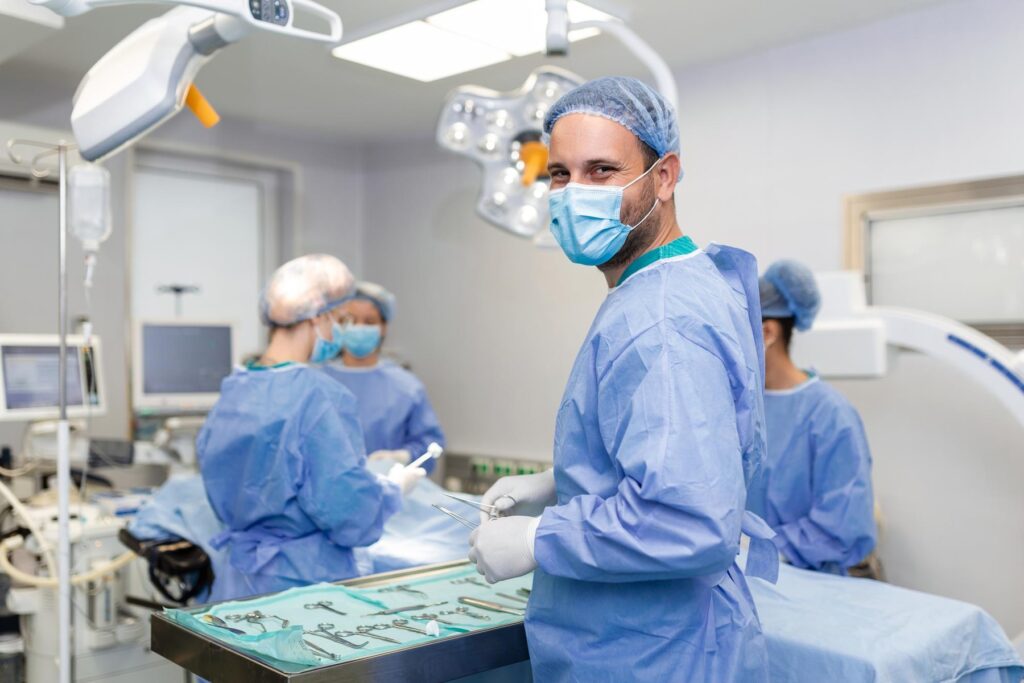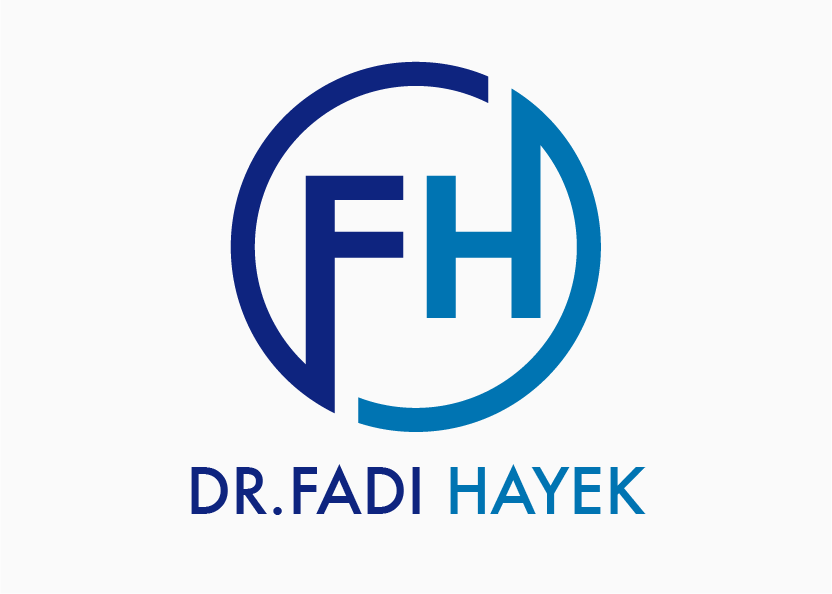Dr. Fadi Hayek's innovative treatments offer a permanent solution for vein and varicose vein issues.
Vascular Surgery Specialist: Providing comprehensive care for a wide range of vein and vascular disorders, including spider veins, varicose veins, capillary veins, hand veins, leg swelling, and venous insufficiency.
For assistance, please contact us during business hours at the following numbers:
LAU Medical Center-Rizk
Beirut
+961 1 200 800
Doha
Royal Medical Center
+97450030072
My Philosophy
It is my belief that the patient-doctor relationship is enhanced by good communication between the doctors, staff, and the patient. In addition, I believe that a well-informed patient is a better health care consumer. It is my goal as a medical care provider for you to have a clear understanding of your health.
- At the Clinic, a personal, individualized approach is provided to each patient’s care based on their history of vascular problems, physical exam findings, as well as the detailed information gained by their comprehensive exam. Each patient is educated about his problem and what he can do to prevent future vein and vascular issues.
- As an expert vascular surgeon and vein specialist,my team and I are highly experienced in providing the most advanced treatments so you’ll enjoy a rapid recovery and healthy legs.
- Call or contact us today to schedule a consultation and experience the best in vein care.

Techniques
- Phlebectomy is a minimally-invasive surgical procedure that removes bulging varicose veins through multiple small 2–3 mm incisions in the skin.
- It is usually performed in a doctor’s office minor surgical operating room using local anesthesia and sometimes light sedation.
- First, the veins are identified and marked with the patient in standing position.
- The doctor then uses a small scalpel to create tiny incisions, inserts a small hook, grasps the vein and removes it.
- The wounds are then closed with minimal stitches or skin adhesive glue. The area is covered with gauze and compression bandages are applied.
Phlebectomy might be done along with another treatment for varicose veins, including radiofrequency ablation of the saphenous vein in the same limb. This procedure typically does not require a stay in the hospital.
- The most recent innovation in the treatment of varicose veins is the use of medical glue known as Cyanoacrylate to physically shut down and seal the main defective vein.
- This procedure involves the placement a very small amount of this medical glue into the vein through a small catheter.
- Once the affected vein is closed, blood is immediately re-routed through other healthy veins in the leg.
Unlike other treatments, this procedure does not require any regional nerve block or large volumes of anesthesia. Furthermore, there are no pre-procedures drugs involved and patients can return to their normal activities right after the treatment.
This treatment doesn’t require any immediate post-treatment pain medication or uncomfortable compression stockings.
- Endovenous laser ablation (EVLA) treats major varicose veins previously treated by stripping surgery.
- With ultrasound guidance, a laser fibre is placed into the abnormal vein through a tiny incision.
- The vein is then numbed with local anaesthetic, and the laser activated as the fibre is slowly removed. This produces a reaction in the vein wall along the treated section, resulting in collapse and sclerosis of the vein wall with minimal discomfort.
The published success of EVLA treatment is between 95-98%, with far fewer complications than surgery. With the addition of EVLA to ultrasound guided sclerotherapy, it is expected that varicose vein surgery will be performed much less frequently in the future.
- Compression stockings squeeze a person’s legs and improves circulation.
- They are tight around the ankles and loose farther up the leg.
- They encourage proper blood flow upward, against gravity, and back toward the heart.
- They may help with discomfort, pain, and swelling, but research has not confirmed whether they stop the varicose veins from worsening or even prevent them.
- The stockings make some people’s skin dry and flaky. If this happens, it is important to contact a doctor.
- Sclerotherapy is one of the common minimally invasive options to treat varicose or spider veins.
- It is a treatment in which a chemical solution is injected into diseased or problem veins. This solution irritates the vein lining causing it to undergo fibrosis, closure and eventually disappear, so that these abnormal veins no longer can fill with blood.
- After each injection gauze and tape is applied to create compression over the injected area.
- At the end of the procedure, external compression is applied using support hose. The compression causes the vein walls to seal together and the vein no longer can transport blood. Your body then breaks down and absorbs the damaged vein.
- Varicose vein stripping and ligation is a surgery to remove varicose veins in your legs.
- Your veins have valves inside them to help ensure that blood flows in the correct direction toward your heart. Varicose veins can occur if these valves become damaged or weakened and blood pools in your veins.
- Vein ligation is “tying off” a varicose vein to stop blood from entering it. The vein is then stripped (removed from your body).
- After varicose vein stripping and ligation, your healthy veins take over to help restore normal blood flow.
- Radiofrequency ablation involves heating the wall of your varicose vein using radiofrequency energy.
- The vein is accessed through a small incision made just above or below the knee.
- A catheter is guided into the vein using an ultrasound scan. A probe is inserted into the catheter that sends out radiofrequency energy.
- This heats the vein until its walls collapse, closing it and sealing it shut.
- Once the vein has been sealed shut, your blood will naturally be redirected to one of your healthy veins. The treated vein then becomes fibrous tissue and will gradually be resorbed by the body.
- Radiofrequency ablation may be carried out under local anaesthetic or general anaesthetic.
- You may need to wear compression stockings for up to a week after having radiofrequency ablation.
- Foam sclerotherapy for varicose veins is a treatment option that can eliminate intermediate-sized veins that are too large for regular sclerotherapy.
- Foam is made by mixing the same liquid sclerosant that is used for sclerotherapy with air to form “micro-soap” bubbles.
- When the foam is injected into a vein the air pushes the blood out of the vein so it does not clot.
- The active part of the chemical sclerosant binds to the inner lining of the vein causing to seal and scar.
- The vein will usually disappear over the course of six weeks. A second treatment may be necessary if the vein does not seal after the first treatment.
After treatment, you must wear a compression stocking and avoid strenuous exercise for three days following the procedure. You should resume walking immediately after the treatment, but only walking, as this movement helps with the recovery process.
© All Rights Reserved.
